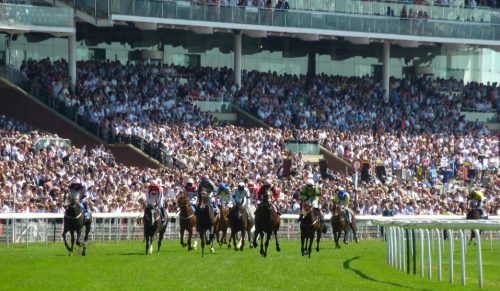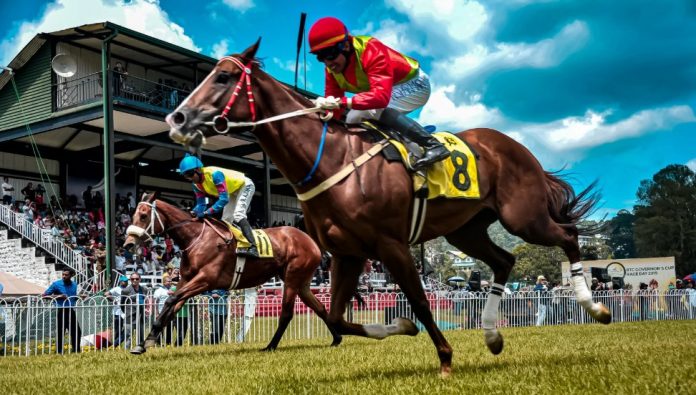As April arrives and spring takes hold, the nation turns its attention to Aintree for the Grand National. More than just a horse race, it is a British sporting institution that blends history, drama, and spectacle.
Few sporting events boast a history as rich as the Grand National. First run in 1839, it has continued uninterrupted except during global conflicts.
This remarkable continuity links today’s fans to those of past generations, creating a unique sense of tradition.
Why the Grand National is Such a Huge Staple of British Tradition?
 The race’s legendary fences, Becher’s Brook, The Chair, and Canal Turn, have remained central to its identity, producing unforgettable moments of triumph and heartbreak.
The race’s legendary fences, Becher’s Brook, The Chair, and Canal Turn, have remained central to its identity, producing unforgettable moments of triumph and heartbreak.
Much like Grand National races in years gone by, the 2025 edition promises another thrilling renewal, with defending champion I Am Maximus aiming to cement his place in racing folklore.
But the National is not just another race; it is steeplechasing’s ultimate examination. The four-mile, 30-fence marathon demands exceptional stamina, skill, and bravery. Even with modern safety improvements, only about one-third of the runners finish, ensuring unpredictability and drama. Horses need not just endurance but what racing experts call “National class” to prevail.
The course itself is a key part of the race’s mystique. Becher’s Brook, with its tricky landing, has caught out many great horses, while the sharp turn at Canal Turn can transform the race in an instant. Every fence tells a story, from dramatic falls to unexpected comebacks.
In 2024, I Am Maximus proved his class by mastering The Chair and surging to victory—a moment that encapsulated the race’s excitement.
Unlike other major races where favourites often dominate, the National thrives on unpredictability. Outsiders frequently cause upsets, with longshots like Foinavon (100/1) and Mon Mome (100/1) shocking the racing world.
The extreme conditions create a level playing field, making it a dream race for small owners and trainers. In 2025, dark horses like Monty’s Star and Favori De Champdou could spring surprises.
The Grand National is one of the UK’s most-watched sporting events, drawing millions of viewers who may not follow racing year-round. Families, workplaces, and pubs unite around sweepstakes and betting traditions, making it a rare sporting event that transcends its core audience.
Its accessibility ensures that even casual fans can be captivated by the unfolding drama. However, the race also has a global reach.
 What truly elevates the Grand National beyond sporting significance into a cultural phenomenon is its capacity to create a shared national experience. For one Saturday afternoon annually, approximately 600 million viewers across 140 countries engage with a British sporting tradition, with domestic viewership regularly exceeding 8.5 million, figures that dwarf conventional racing audiences.
What truly elevates the Grand National beyond sporting significance into a cultural phenomenon is its capacity to create a shared national experience. For one Saturday afternoon annually, approximately 600 million viewers across 140 countries engage with a British sporting tradition, with domestic viewership regularly exceeding 8.5 million, figures that dwarf conventional racing audiences.
Beyond the technical and cultural aspects, the National’s enduring appeal stems from its extraordinary capacity to generate human narratives of exceptional emotional potency.
From Bob Champion’s inspirational triumph aboard Aldaniti after overcoming cancer, to Rachael Blackmore’s groundbreaking success as the first female jockey to win aboard Minella Times, the race consistently produces stories that transcend sport.
Perhaps most significantly, the Grand National functions as a social catalyst, bringing communities together through shared participation. From rural pubs to urban households, the race creates temporary communities united by common focus and engagement.
As the famous Aintree tape rises for the 2025 renewal, millions will participate in an event that connects them not merely to racing’s present but to its rich heritage.
In that moment, the National will once again demonstrate its unique capacity to unite generations, communities and perspectives through the simple yet profound pleasure of bearing witness to an authentic sporting challenge that has lost none of its power to captivate, inspire and astonish.




































